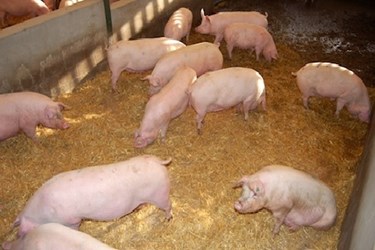Cargill Will Move Sows To Group Housing By 2015
By Karla Paris

Public interest and a push for animal welfare have expedited Cargill’s goal for the group housing of swine
Many different housing designs are used in today’s U.S. pork industry. Each design provides for the well-being of the gestating sow in its own way. The National Pork Board (pork check-off) notes that housing designs usually fit in one of two categories:
- Individual Housing includes the individual stall system. In this system, sows are housed in a structure large enough for one sow to stand up and lie down. There are several variations in stall designs.
- Group Housing includes free access stalls, trickle feeding, electronic sow feeding stations, and deep bedded systems with many different variations in group housing systems being used. Group sizes may range from five sows per pen up to more than 100 sows per pen.
Each housing design has unique advantages and disadvantages for the well-being of the sow. There are many factors that contribute to the success of a particular type of housing system, but none more so than the caretaker's husbandry skills.
Cargill, one of the largest-pork producers in the U.S., announced that it is continuing its commitment of moving to group housing for its sows that produce hogs for pork. Company owned facilities will be 100 percent group housing by the end of calendar 2015. Cargill-owned sows represent approximately 30 percent of the total hogs harvested annually at the company’s two pork-processing facilities in Illinois and Iowa. For the past several years, Cargill has maintained 50 percent group housing for its sows. In 2011, Cargill acquired an idled farm in Texas and invested more than $60 million in the purchase and improvements of the facility, which has allowed the company to achieve its group housing goal.
Case Study: Pork Processor Relies On X-Ray Inspection And Metal Detection
As a pioneer in the group housing of sows, Cargill has been ahead of the curve in most recent years when it comes to what retail, foodservice, and food processors want — suppliers that use group housing for gestating sows. Public interest and a push for animal welfare have expedited this desire from all businesses involved in the market.
In the company’s release, Cargill notes that its pork business maintains a commitment to the highest standards of animal handling and welfare, and continuously explores technologies that allow it to enhance its efforts in this important area of animal agriculture to help feed a hungry world. Cargill’s timetable in transitioning to group housing for sows will put the company in prime position to be the alternative sow housing leader.
